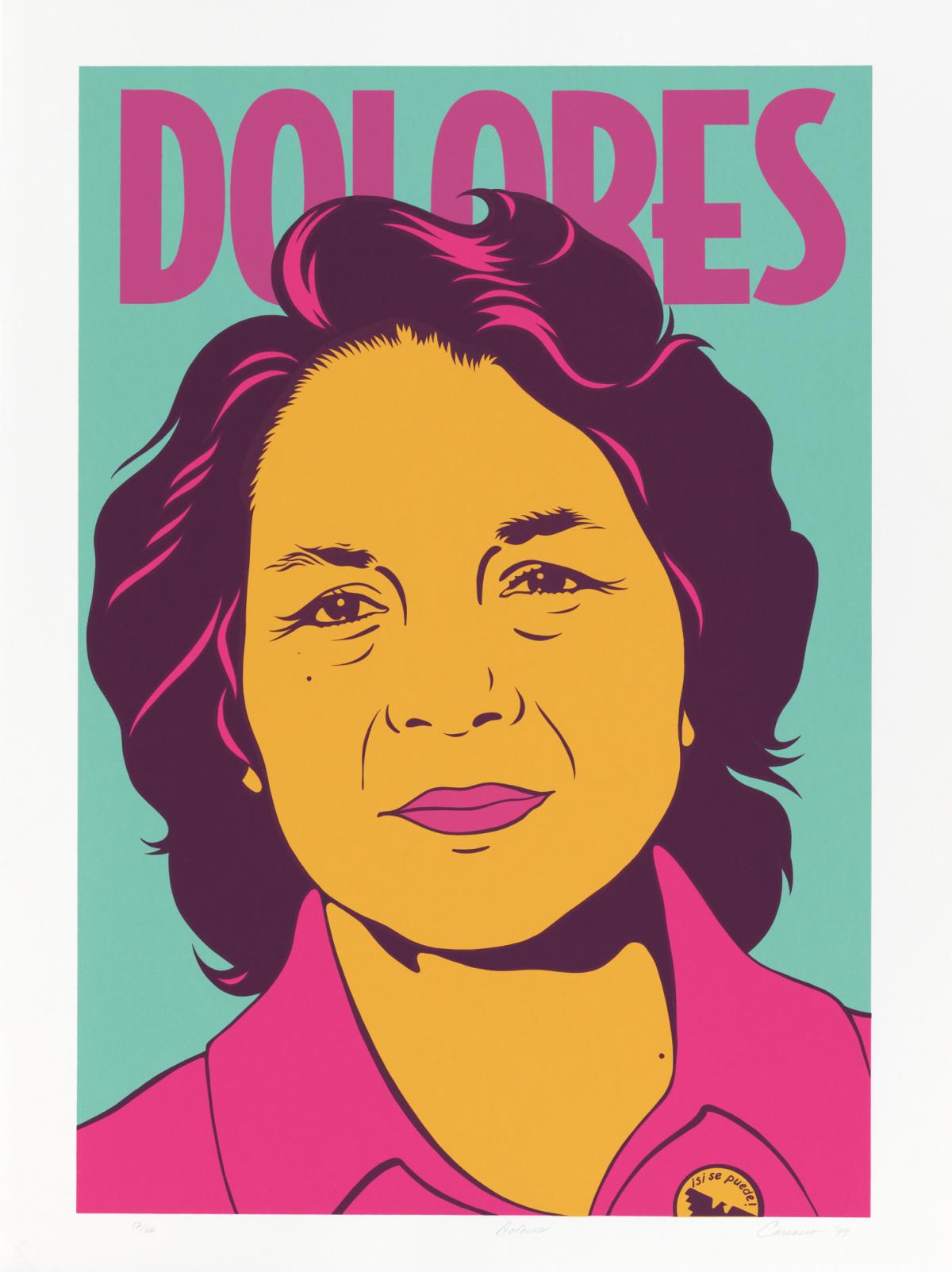
Since the 1950s, Dolores Huerta has been a tireless advocate for the rights of workers, immigrants, and women. Along with César Chávez, Huerta cofounded the pivotal labor union, United Farm Workers, in 1962. Using social protests as a form of activism, the UFW gained nation-wide recognition for leading a strike on the grape industry in response to poor pay and dangerous working conditions in the late 1960s. The accompanying boycott of grapes became one of the most successful consumer boycotts in the history of the United States. As the union's chief lobbyist and contract negotiator, Huerta coined the popular phrase “Sí se puede” (Yes, we can), a slogan that remains the motto of the UFW and is used as a rallying cry for Latinx activists today. Now in her nineties, Huerta continues to be a respected public voice. She has received numerous awards and honors, including nine honorary doctorates, and, in 2012, the Presidential Medal of Freedom.
Carrasco chose to create a portrait of Dolores Huerta at a time when the groundbreaking labor organizer was underrecognized for her activism and advocacy for workers' and women’s rights. The brightly hued print, which references Huerta by first name only, urges viewers to recognize female leadership. The close-up of Huerta’s face, rendered with a pop aesthetic, recalls Andy Warhol’s celebrity portraits, casting a beautiful and tireless labor leader as a new icon for the rising Latinx culture in the United States.
SAAM’s landmark exhibition, ¡Printing the Revolution! The Rise and Impact of Chicano Graphics, 1965 to Now, explores how Chicanx artists have linked innovative printmaking practices with social justice. This blog post is part of series that takes a closer look at selected artworks with material drawn from exhibition texts and the catalogue.



















